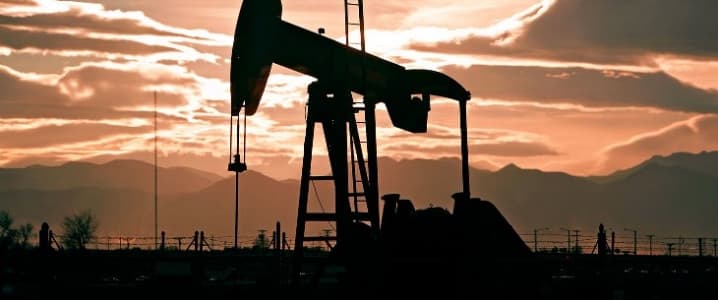Oil Producing States Fare Differently in Period of Lower Prices
It should be no secret that the oil and gas industry tends to carry the heaviest tax burden amongst industries. As oil prices have slid, many oil-producing states have felt significant tax revenue losses and are being forced to come up with new ways to finance spending, including raising taxes.
In response, several states have considered proposals to modify severance taxes or initiate new fees in recent years. Brookings released a report in April recommending that states channel their oil revenues to stable trust funds that are more able to weather the boom and bust cycle.
These states include Alaska, Colorado, Louisiana, New Mexico, Oklahoma, Texas, West Virginia, and Wyoming, which rely on severance taxes for 16 percent of their tax revenue, as opposed to the 0.2 percent reliance seen in the rest of the U.S.
Higher Severance Tax Will Stunt Oklahoma Economy, Says Chamber of Commerce
Oklahoma is facing a potential raise in severance taxes that could dampen future development, according to a new report by State Chamber. This comes after criticism of new severance tax laws passed by the state legislature in 2014 and made effective on July 1, 2015. Under this new scheme, new production would be taxed at two percent for the first thirty-six months before rising to seven percent.
Oil and gas serves as the largest single source of tax funding for public services in the state. In 2015, the industry paid a disproportionate amount of statewide corporate taxes at 22 percent and accounted for 7.4 percent of state employment, 13 percent of household earnings, and 17 percent of state gross domestic product.
“Even with the drastic price reduction we’ve seen in the past years, oil and natural gas is still the most important contributor to economic growth in Oklahoma,” said Fred Morgan, President and CEO of the State Chamber of Oklahoma
Related: What Do Driverless Cars Really Mean For Transportation
With its highly economic SCOOP and STACK plays being touted as the next big thing in the oil patch, policymakers are seeking to keep the state competitive for oil and gas investments during the period of lower prices. A survey by the Federal Reserve Bank of Dallas indicates that Oklahoma operators reported needing an average oil price of $56 per barrel to profitably drill a new well in the state.
Higher Severance Tax One Possible Solution to Alaska’s Budget Crisis
One of the states affected most severely by the price collapse is Alaska. The state is currently facing a $4 billion budget deficit while 90 percent of its revenue is tied to oil. At its current $11 million a day cash loss, the state’s emergency funds will be depleted in two years.
In response, Governor Bill Walker has pushed lawmakers to raise severance taxes from four percent to five percent, impose an income tax for the first time in 35 years, double gasoline taxes, and raise $500 million by slashing subsidies to small companies. Long-term, his plan is to reduce state revenue dependence on oil to 20 percent in two years.
After a long fight this spring and summer, the state legislature managed to pare the budget deficit to $3.2 billion, although this too would nearly deplete the fund. A special eight-day legislative session in July closed with little progress made on budget reforms, which will be put off until the November election.
Of Walker’s nine deficit-reduction proposals, the only one approved by lawmakers was an amended version of a bill to cut cash subsidies for small oil companies. The current oil tax credit program is set to pay $775 million in subsidies to small oil and gas companies in the next fiscal year, which is more than the state is forecasted to collect in total oil production taxes. Related: Trudeau Pushes Through LNG Megaproject Despite Environmental Concerns
On September 23, Walker also slashed residents’ dividends from the Alaskan Permanent Fund in half to $1,022, a highly unpopular move that could potentially cost him the election.
Diversified Colorado Economy Weathers Downturn Better
In Colorado, oil and gas contributions to public revenue through property, income, and severance taxes and public land leases and royalties totaled $1.2 billion in 2014, of which oil and gas property taxes accounted for $400 million and severance taxes totaled $330 million. Industry payments of royalties, rents, and bonuses to the federal and state governments accounted for $315 million and $160 million, respectively.
Highlighting the state’s massive growth in production, severance tax revenue has increased 288 percent from $85 million in 2010.
ADVERTISEMENT
As shown in the chart below, Colorado’s revenue sources are more diversified than other oil and gas producing states in the Rocky Mountain region, with tax collections from the energy sector accounting for less than 5 percent of the state total.
(Click to enlarge)
Source: Federal Reserve Bank of Kansas City
By Oil & Gas 360
More Top Reads From Oilprice.com:
- This Could Be One Of The Biggest Winners From OPEC’s Production Cut
- 9/11 Bill Crashes Saudi Stock Exchange, Bond Market Ambitions
- How The Oil Price Slump Affected The Ultra-Rich



















